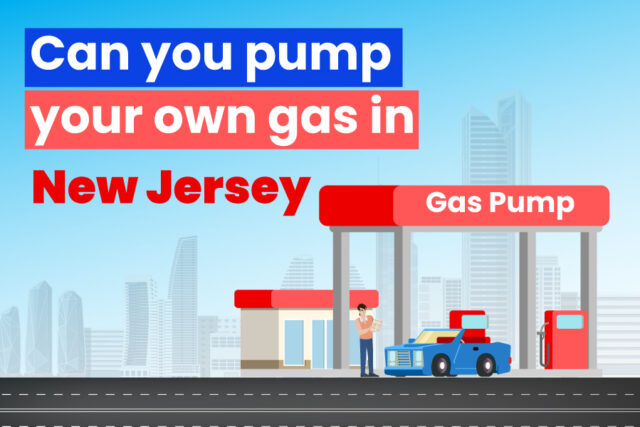If you are a resident of New Jersey and have a car, you may wonder, “Can you pump your own gas in New Jersey?” In most of the US, you can go to a gas station and pump gas alone. However, the National Association of Convenience Stores stated that self-serve gas pumps first existed in the middle of the 20th century.
Before that, state fire codes mainly prohibited pumping gas. In 1964, the first self-service gas stations in the United States were set up at a store in Colorado. This article will explore the details of pumping your gas in New Jersey.
Can You Pump Your Own Gas In New Jersey?
In New Jersey, it has been against the law to pump your gas, and this rule has been followed since 1949. If you get caught pumping your gas, you must pay a fine between $50 and $250. If you do it again, you’ll get a $500 fine. There have been a few exceptions over the years. However, any attempt at self-service gas pumping goes against the Retail Gasoline Dispensing Safety Act.
This law aims to honor the gas attendants who work across the state. New Jersey takes pride in providing full-service gas experiences for its residents at the gas pumps. It is a significant reason why self-service pumping is banned. Health and safety concerns also play a role in this decision. Full-service gas stations in New Jersey may have slightly higher prices than those in other parts of the United States. However, New Jersey residents don’t mind. They appreciate the convenience of having gas attendants take care of their vehicles when refueling.
The History Of Bans On Self-Service Gas In The United States
Self-service gas stations have existed in the United States since the early 1900s, when the first stations were built. However, it wasn’t until around 1980 that self-service gas became the primary way to get gas in the US. Charles Romeo and Ronald Johnson wrote in a 2000 study about self-service that its journey to the top was challenging.
The first self-service gas stations appeared in this country in 1915. They were mostly built for emergencies or when gas pumps were closed at night. Before they could pump gas, people had to pay with coins. Full-service gas pump operators opposed self-service. They saw it as a threat to their business because it meant cheaper gas. They worked hard to prevent it from spreading too much.
Fuel sales bring in little profit. Gas stations used to make money and differentiate their brands by providing extra services like checking oil and batteries, performing vehicle repairs, and cleaning windshields. In the first half of the 1900s, station attendants wearing complete uniforms, some even sporting bow ties, would fill up customers’ tanks. It was a big part of their plan to draw in drivers.
Full-service gas pumps highlighted safety concerns with self-service. They claimed that untrained drivers might not know how to fill up gas correctly and could start fires. With help from local fire officials, full-service gas stations pushed state lawmakers to ban self-service. Self-service gas stations were banned in 23 states by 1968.
However, when self-service became a hit worldwide and gas stations changed their business plans, self-service started replacing attendants in the US. “Actually, modern self-service gas pumps got their start in Sweden,” explained Matt Anderson, a transportation curator at The Henry Ford Museum in Michigan. “Drivers in Sweden paid less for self-service gas stations than full-service. Then the idea spread across Europe.”
Around the same time, car warranties started stipulating that vehicles had to be taken to dealerships for servicing. This change hurt gas pumps’ repair and service business. Regular full-service gas pumps lost their primary source of profit from fixing vehicles and had to switch their operation method,” explained Wayne Henderson, the author of “One Hundred Years of Gas Stations” book.
To make a profit, full-service gas stations had to find new methods. They switched to self-service, which saved them money and boosted their gas sales. They also started selling other stuff like food, snacks, tobacco, and coffee, which increased their profit. “Self-service gas stations ended up being a hit because it meant selling lots of gas and making more money on other stuff,” stated Gary Scales, a student at Temple University writing an essay on gas station history.
Gas station owners started pushing states to lift their bans on self-service. By 1992, about 80% of all gas pumps in the country were self-service, up from only 8% twenty years earlier.
History Of Self-Service Gas In New Jersey
In 1949, New Jersey passed the Retail Gasoline Dispensing Safety Act, making it illegal for people to pump their gas. The act was passed because of safety worries, such as fire hazards. But there’s another reason behind it—something shady, like a plot from a Tony Soprano show.
Journalist Paul Mulshine wrote a 2019 story suggesting that the Retail Gasoline Dispensing Safety Act. was made to control gas prices. It was also meant to stop a businessman who was selling gas for less than his competitors. In 1949, Irving Reingold, a businessman, opened a big gas station on Route 17 in Hackensack with 24 pumps.
He sold gas for 18.9 cents per gallon while others charged 21.9 cents. The only thing that customers had to do was to pump it themselves. Mulshine said customers loved the idea and lined up for miles to get gas from him. But his competitors didn’t like it. They even shot at his gas station, but the bullet-proof glass saved Reingold. They convinced the state to pass a law banning self-service gas. The law passed fast, and Reingold had to close his gas business. Then, people had to pay higher prices for gas again.
Why Self-Service Gas Is Banned In New Jersey?
New Jersey banned self-service gas back in 1949 with the Retail Gasoline Dispensing Safety Act. By 2022, the state’s legislature had listed 10 declarations and findings explaining why people are not permitted to pump their gas. These declarations and findings are:
- Ensures compliance
- Fire dangers
- Levels out the expenses of full-service
- No cost discrepancy was observed
- Assists cashiers
- Insurance rates
- Vehicle maintenance and repair services
- Public welfare
- Gas fumes
- Maintenance inspections
The complete Retail Gasoline Dispensing Safety Act is available on the state Department of Labor and Workforce Development’s website.
Political Agenda On Self-Service Gas Bans In New Jersey
Despite many legislative attempts, resistance from the gas station industry, and court battles, New Jersey still adheres to its no-self-service gas rule. In the Garden State, the ban on self-service gas and its reputation for cheap gas are part of its culture. You can even spot a famous bumper sticker that says, “Jersey Girls Don’t Pump Gas.”
Trying to change the rule has been viewed as a political loser. In New Jersey, self-service gas has been like a political third rail,” mentioned by Governor Phil Murphy in April 2022. But with gas prices hitting record highs and gas stations struggling to get workers, some people in New Jersey’s gas industry are pushing to lift the ban.
Seventy-five gas pumps in New Jersey dropped prices in May 2022 to win support for letting people pump their gas. Still, it doesn’t look like the state will permit self-service gas anytime soon. The state Senate’s president is against a bill that would lift the ban. Also, most New Jerseyans are interested in something other than self-service gas. A March 2022 poll found that 73% of the state’s residents prefer to have someone else pump their gas.
What Are The Attempts Taken To Lift Self-Service Gas Bans In New Jersey?
Over the years, people tried to change the law of self-service gas bans. The first attempt was in 1951, but it didn’t work. By the late 1970s, all U.S. states except Oregon and New Jersey allowed self-service gas stations. In 1981, Gerald Cardinale, a member of the New Jersey Assembly, tried to change the law to allow self-service gas stations. He kept pushing for it even after he became a state senator, but nothing changed.
In 1988, Kirschner Brothers Oil Company submitted a suit against the state. They said the law was old-fashioned and consumers should choose if they wanted self-service or full-service gas. At first, a Superior Court judge agreed with them. But later, an appeals court disagreed, referring to a ruling from 1951 by the New Jersey Supreme Court, and overturned the decision.
Conclusion
Can you pump your own gas in New Jersey? No, you can’t. It is illegal to pump your own gas in New Jersey. Breaking this rule can result in big fines. In 2022, a Monmouth University poll found that 60% of New Jerseyans don’t want gas stations to become fully self-service. 55% of New Jerseyans believe it is good for the state to be the only one not allowing self-service at gas stations.














